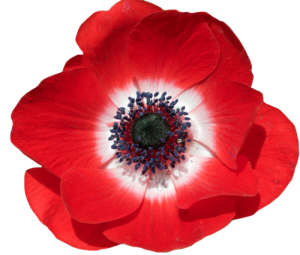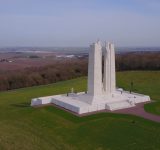Personal Details
Born in Newhall, Nantwich, Cheshire on 5 February 1884, the second son of Thomas Allen and Sarah Hannah Hancock of Combermere Cottage, Old Woodhouse, Broughall, Whitchurch, Shropshire.
Harry was husband to Mary Ellen Hancock (they married 7 September 1916), living at Bolling Cottage, Malpas, Cheshire and then 17 Carlisle Street, Crewe, Cheshire and then 91 Nantwich Road, Crewe, Cheshire.
From the research undertaken, it appears that Harry travelled from Liverpool to St John, Canada on the SS Empress of Britain departing 25 February 1910 and enlisted into the Canadian Expeditionary Force in 1916. He embarked for England on 26 April 1916 on the SS Metagamar, arriving on 5 May 1916.
Military Details
Regiment : 34th Fort Garry Horse, Canadian Expeditionary Force
Rank : Private
Service Number : 551944
Presumed dead; France 1 April 1918 Aged 34

The British War Medal (also known as 'Squeak') was a silver or bronze medal awarded to officers and men of the British and Imperial Forces who either entered a theatre of war or entered service overseas between 5th August 1914 and 11th November 1918 inclusive. This was later extended to services in Russia, Siberia and some other areas in 1919 and 1920. Approximately 6.5 million British War Medals were issued. Approximately 6.4 million of these were the silver versions of this medal. Around 110,000 of a bronze version were issued mainly to Chinese, Maltese and Indian Labour Corps. The front (obv or obverse) of the medal depicts the head of George V. The recipient's service number, rank, name and unit was impressed on the rim.
The Allied Victory Medal (also known as 'Wilfred') was issued by each of the allies. It was decided that each of the allies should each issue their own bronze victory medal with a similar design, similar equivalent wording and identical ribbon. The British medal was designed by W. McMillan. The front depicts a winged classical figure representing victory. Approximately 5.7 million victory medals were issued. Interestingly, eligibility for this medal was more restrictive and not everyone who received the British War Medal ('Squeak') also received the Victory Medal ('Wilfred'). However, in general, all recipients of 'Wilfred' also received 'Squeak' and all recipients of The 1914 Star or The 1914/1915 Star (also known as 'Pip') also received both 'Squeak' and 'Wilfred'. The recipient's service number, rank, name and unit was impressed on the rim.
Further Information
If you can provide any further information on Harry Hancock please get in touch by leaving a comment below, using our Contact Form or by calling in to Whitchurch Heritage Centre.
Information provided by Whitchurch Museum and Archives


